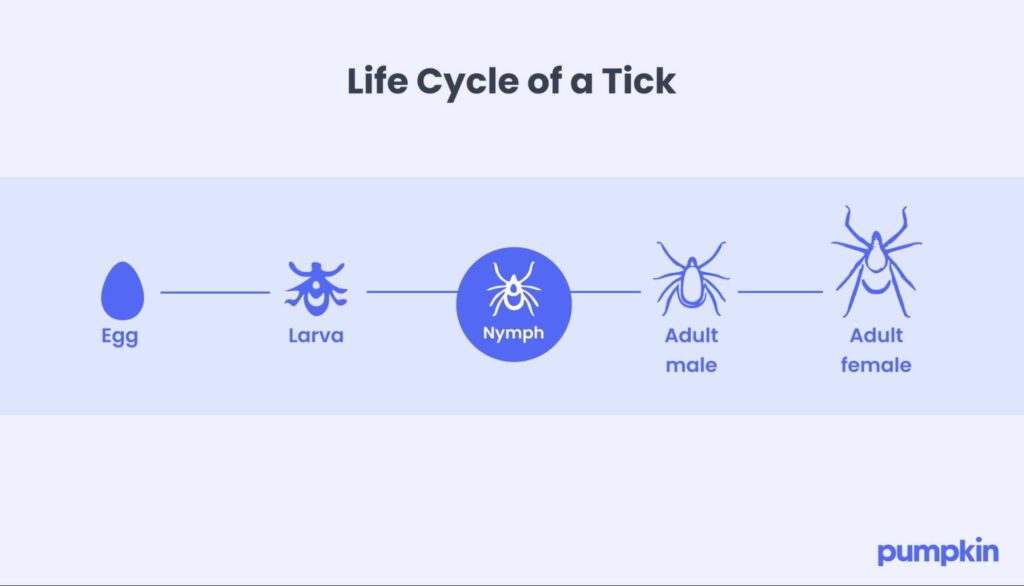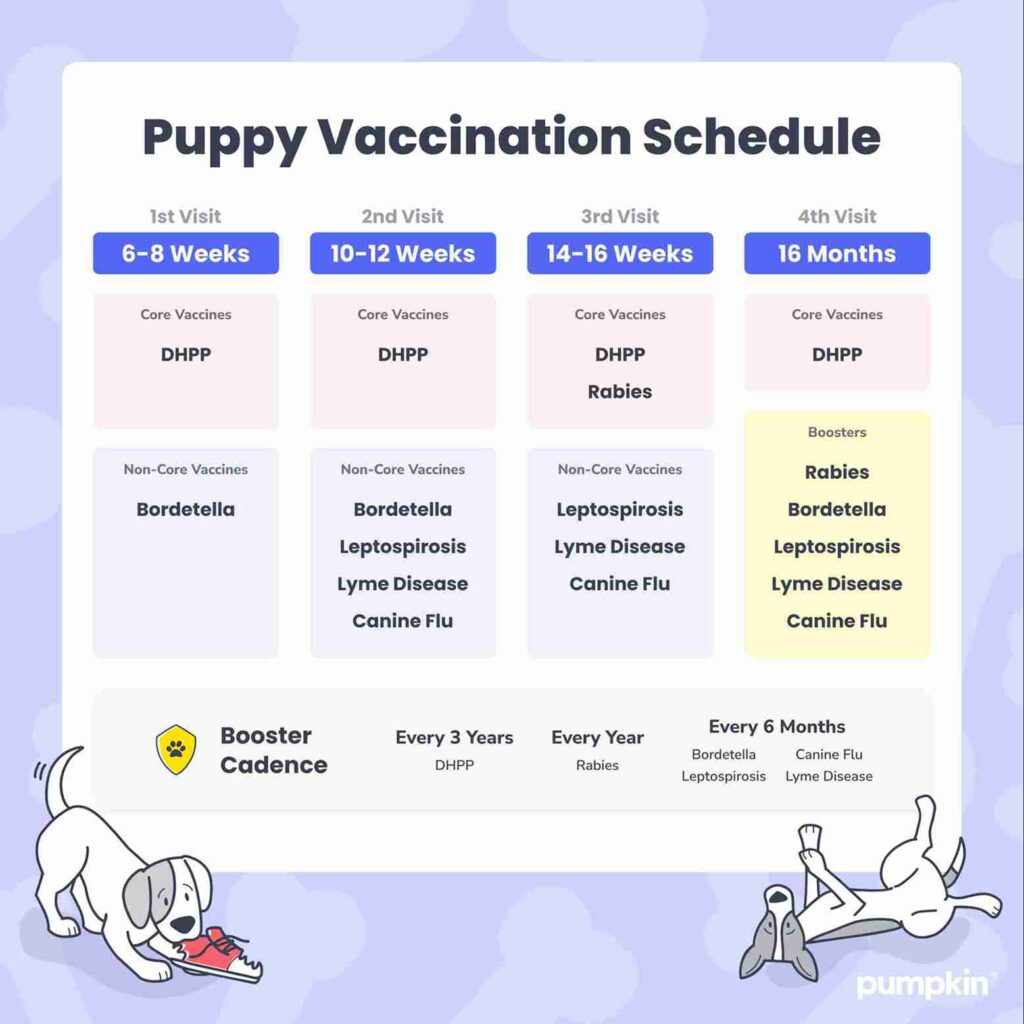Key Points
- Lyme disease in dogs is serious if left untreated, but is highly preventable with strict tick control. There is also a vaccine available.
- Common signs of Lyme disease in dogs include swollen joints, limping, and lameness.
- Treatment of Lyme disease includes antibiotics and supportive care medication.
Lyme disease can be very tricky to diagnose, in humans and in our pups. Too often, it flies under the radar. Many dogs won’t show symptoms for weeks or even months after being bitten by an infected tick.
So how do you spot the signs? And how do you prevent Lyme disease from slowing down your dog in the first place? Don’t worry, because if you have questions about Lyme disease in dogs, we have answers.
What is Lyme disease?
You might have heard of Lyme disease in humans, but dogs can also get infected with this tick-borne disease. It can be transmitted to both dogs and humans through the bite of infected blacklegged ticks, also known as deer ticks. These tiny-sized terrors carry a bacteria called Borrelia burgdorferi, which can cause big problems for you and your dog.
Lyme disease is most prevalent in the warmer months of the year when ticks are active (April to September), particularly in the Northeast, mid-Atlantic, and upper-Midwest regions of the United States. So, while you and your pup enjoy those sunny days, it’s important to be tick-aware.
What are the symptoms of Lyme disease in dogs?
Lyme disease symptoms in dogs depend on the progression of the initial infection. Common symptoms of Lyme disease in dogs include:
- Swollen joints and joint pain
- Limping or lameness (often intermittent and on different limbs)
- Loss of appetite
- Weight loss
- Fever
- Swollen lymph nodes
- Lethargy
- Increased thirst and urination (related to kidney disease)
Beware, it may take 2-5 months after infection for these common symptoms to show. On top of that, only 5-10% of infected animals show clinical signs of Lyme disease. This means dogs can carry the disease without showing any obvious symptoms, so tick prevention is a must.
If you live in an area with a high tick population or often do outdoor activities, your dog should absolutely be on a monthly fast-kill tick preventative. If this isn’t the case, make an appointment with your vet ASAP.
How do dogs get Lyme disease?
Dogs get Lyme disease after being bitten by infected blacklegged ticks. If this annoying little pest attaches to your dog for more than 24 hours, the Borrelia burgdorferi bacteria can transfer from the tick to the dog.
All life stages of the blacklegged tick (egg, larva, nymph, and adult tick) can bite, but nymphs are the primary culprits in Lyme disease transmission. They’re the size of a poppy seed, making them more likely to stay hidden and attached long enough to transmit the disease — often completely unnoticed.

How is Lyme disease in dogs diagnosed?
Lyme disease is diagnosed with a blood test. Many symptoms of Lyme disease in dogs can be easily mistaken for other ailments, so a veterinarian will analyze your dog’s blood to detect Lyme disease-specific antibodies.
Your vet will typically perform these two blood tests:
- The C6 Test: This preliminary test detects the presence of antibodies to determine whether or not your pup has Lyme disease.
- The Quant C6 Test: If the C6 Test comes back positive, your vet will perform this test to confirm the infection and determine whether treatment is necessary.
Antibodies can take some time to show up in the blood after infection. So, it’s generally not recommended to test dogs earlier than four weeks after a tick bite.
Since ticks can transmit other diseases, you can also ask your vet to do a SNAP 4Dx Plus Test. This test screens for multiple tick-borne diseases, including Lyme disease, anaplasmosis, and ehrlichiosis, and helps identify common co-infections.
How is Lyme disease in dogs treated?
If caught early, treatment for Lyme disease is pretty straightforward. Your vet will typically prescribe a course of antibiotic treatment for at least 30 days. The go-to antibiotics are usually doxycycline, amoxicillin, and azithromycin — specifically in this order.
Your dog may also need supportive care to manage pain, inflammation, and other symptoms caused by Lyme disease.
After successful treatment, antibody levels should decrease by 40% within 6-8 weeks — if the infection was caught in the early stage. If caught in the later stage, it may take up to 3 months for antibody levels to decrease.
You’ll also need to keep a close eye on your pup even after treatment. This means doing follow-up blood tests to make sure antibodies have dropped and treatment has worked. Sometimes, your pup might need a longer course of antibiotics or a few rounds of treatment.
Untreated Lyme disease can greatly impact your dog’s quality of life, and it could cause further health complications such as:
- Lyme nephritis (kidney damage, or kidney failure in severe cases)
- Lyme meningitis (inflammation of the membranes around the brain and spinal cord)
- Chronic pain from arthritis
- Lyme carditis or acute cardiac syndrome (although very rare)
- Seizure disorders or facial paralysis
So, don’t brush off any subtle signs or tick bites — schedule an appointment with your vet if something feels off. Early detection, fast tick removal, and ongoing tick prevention are the best ways to protect your dog from Lyme disease.
How much does it cost to treat Lyme disease in dogs?
The cost of treating Lyme disease depends on how far the disease has progressed, the length of antibiotic therapy, and your geographical location.
Here’s an estimate of how much you’ll be paying out of pocket:
- Blood tests: $80-$200
- Antibiotics: $800 (4-week standard course)
Don’t forget the initial examination fee, which typically costs $40-$100. There may also be other expenses, such as pain relief, anti-inflammatory medication, and follow-up exams.
Surprise vet costs can add up quickly, but pet insurance can help you prepare for future illnesses or accidents. Find out how a Pumpkin Dog Insurance plan can help you get the best in care for your pup when the unexpected happens.
How can I prevent my dog from getting Lyme disease?
It’s undeniable: Prevention is better than treatment. Here are some simple measures you can take to protect your dog’s health:
Use Tick Prevention: Use of a tick parasiticide that kills ticks quickly is the best way to protect your dog against Lyme disease and other tick-borne diseases. Your veterinarian has a variety of products they can prescribe or recommend. For best results, don’t go to the pet store or use over-the-counter products; instead, go with your vet’s recommendation.
Inspect your dog regularly for ticks: If your dog frequents grassy or wooded areas, take the time to inspect their ears, lips, tail, anus, armpits, the area around the eyes, and their toe beans for ticks. If you see a tick, follow this step-by-step guide on how to get a tick off your dog, or get help from a vet.
Avoid tall grass and mashes: Keep your dog out of tall grasses and marshes in endemic tick areas to minimize exposure to ticks. If possible, mow your lawn to keep your grass short and remove old furniture or trash from the yard.
Get your dog vaccinated: Lyme vaccines can prevent illness in 60-86% of vaccinated dogs, although it does not provide long-lasting immunity.

Consider other tick prevention methods: A prescription tick preventative medication, such as monthly oral chewables like Simparica and Simparica Trio, works well too. Ask your vet which tick prevention methods and tools are best for your dog.
Schedule annual vet visits: Discuss your dog’s lifestyle and risk factors with your vet to help them determine the most appropriate preventive measures and frequency of testing. Regular vet visits also help you build a strong relationship with your veterinary team.
Lyme disease in dogs: Nip it in the bud!
Lyme disease can be a very serious illness in dogs, but you have the power to prevent it. Creating a prevention plan, checking for ticks after a long day outside, and knowing the symptoms of Lyme disease will help keep your dog safe.
By being a proactive and responsible pet parent, you and your dog can enjoy the great outdoors, totally Lyme-free.
FAQs
- https://www.cdc.gov/Lyme/about/index.html
- https://www.cdc.gov/ticks/prevention/index.html
- https://www.avma.org/resources-tools/pet-owners/petcare/Lyme-disease-dogs
- https://www.vet.cornell.edu/animal-health-diagnostic-center/laboratories/serology-immunology/Lyme-disease
- https://lvvsonline.com/Lyme-disease/
- https://www.brookfarmveterinarycenter.com/post/the-importance-of-the-4dx-snap-test-for-dogs
- https://www.simonvetsurgical.com/news/canine-arthritis-and-its-connection-to-lyme-disease
- https://pubmed.ncbi.nlm.nih.gov/7726190/
- https://www.upmc.com/services/heart-vascular/conditions/lyme-carditis
- https://www.bayarealyme.org/about-lyme/lyme-disease-pets/
- https://www.msdvetmanual.com/dog-owners/disorders-affecting-multiple-body-systems-of-dogs/lyme-disease-lyme-borreliosis-in-dogs
- https://www.centreanimalhospital.com/blog/important-things-to-know-about-lyme-disease-in-dogs.html
- https://www.globallymealliance.org/blog/lyme-disease-in-dogs-1
- https://www.zoetispetcare.com/products/simparica
- https://www.zoetispetcare.com/products/simparica-trio
- https://www.gallant.com/blog/lyme-disease-dogs-facts
- https://www.lawrenceburgvetclinic.com/blog/2018/april/do-you-know-the-facts-about-canine-lyme-disease-/




